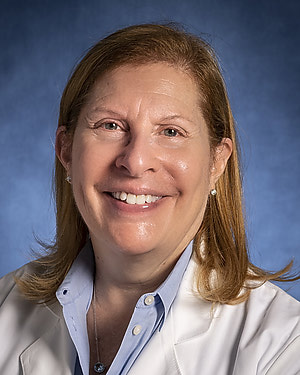Takeaway
While caring for a four-year-old girl diagnosed with lymphoma, I learned that acknowledging and validating patient and family fears strengthens relationships.

Connecting with Patients | November 9, 2022 | 2 min read
By Joanne Shay, MD, Johns Hopkins Medicine
Trust is one of those words that we instinctively understand, however defining the term and its relevance to our work as healthcare professionals can be enriching. In the most elemental definition, trust implies a personal relationship that can be either brief or enduring. In the brief patient encounter, trust may be the product of a stressful situation where choices are limited and there’s no time to consider alternatives.
For example, a parent advised by their pediatrician to bring their beautiful four-year-old daughter to the ER for further evaluation of petechiae and a new jaw mass. The parent has no concept of what pain and heartache the next 12 months of their daughter’s lymphoma diagnosis will bring to their family. Upon arrival in the ER, they’re registered and interviewed to document the child’s recent change in health. Decisions are made for the plan to arrive at the initial diagnosis, the process appears routine, the care team in the ER is skilled and the parent follows the path ahead, accepting the life vest offering of apparent clinical acumen and self-confidence by the medical team. The ER team projects a calm and knowledgeable presence that is reassuring and worthy of initial trust.
The circle of medical experience for this family widens abruptly when they’re told that an MRI is needed for treatment planning, and the sooner the better. The next doctor they encounter is an anesthesiologist. It’s Saturday, and the MRI team must be called in from home. And wouldn’t it be wonderful if the on-call ENT surgeon already operating on another child could perform the jaw tumor biopsy in the same setting with one anesthetic. Later in the week, Mom sees their anesthesiologist and remembers the skill and insight, but also the kindness and empathy this physician conveyed. A few weeks later the family encounters the anesthesiologist in the hospital lobby, and the joy of progress is shared, along with introductions to the newest unicorn stuffed animal added to an already impressive collection.
Months later, a bone marrow biopsy prompted by concerns for recurrence is scheduled, and Mom is relieved to see the familiar smiling eyes of their anesthesiologist. The doctor understands the family’s journey, both the bad times and the good. This is a physician who can celebrate their child’s spirit and is unphased by the girl’s anger. The doctor acknowledges that fear is real, but that making the best of the present and having confidence in the treatment plan created by the most experienced knowledgeable oncology team will help everyone get through today, ready for whatever tomorrow brings.
This is the physician who a few days later removed a sparkly pink balloon from a wall decoration to give the little girl as collateral reward for a tearless entry into the OR for removal of an infected port. This is the doctor who’s become a part of the journey of healing and can share tears of joy and relief when learning of the child’s remission.
Enduring trust is developed over time. It is based on a shared story. It is developed over repeated episodes of care and transcends acknowledgement of vulnerability by empowering personal adaptive behavior and the ability to create tomorrow.
This piece expresses the views solely of the author. It does not necessarily represent the views of any organization, including Johns Hopkins Medicine.

